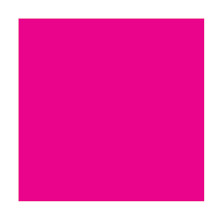

Carlson proposes in his article, “What is Performance,” that the act of performance has expanded from what was traditionally known as a theatrical manifestation to include a complex range of cultural, social, and intellectual concerns exhibited in and outside of the conventional theater, relating to the issues of race, gender, and power. I thought Carlson’s article of performance was an appropriate introduction to Jones’ article, “Beneath This Mask Another Mask,” for Jones exemplifies this “quest” of the postmodern artist that Carlson refers to by examining the work of several self-portrait photographs by predominantly female artists who are, indeed, addressing these various social and cultural concerns.
I would like to extend this examination by investigating the work of the London-based artist Sarah Lucas in light of these two authors’ concepts of performance and the self-portrait. Sarah Lucas is widely known for her “aggressive” social commentary on the female (but perhaps not “feminine”) body, sexuality and the “economy of the readymade.” (Tate Online). I first encountered Lucas’ work while studying in London, where I saw her visual pun-inspired bed sculpture, Au Naturel , a provocative and humorous commentary on sex and the body.
Lucas has also created several self-portraits that comment on similar issues pertaining to the body and gender identification (two of which are posted above in this blog). In Self Portraits 1990-1998, Eating A Banana, Lucas stares directly at the camera, an androgynous persona taking a bite out of a banana, the most symbolically phallic fruit symbol. Referring to Wilke and Sherman’s photographs, Jones states that they “…fatally cross the wires that conventionally power the male gaze, confusing the domains of spectatorial desire and authorial/female self assertion and so short-circuiting its effects.” (Jones 52). Lucas is certainly crossing these “wires” that conventionally empower the male gaze. By seducing the male with her seductive action, the male could feel threatened by an androgynous looking female by experiencing a homoerotic connection with the artist through this self-portrait.
In another Lucas self-portrait (part of the same series entitled Self-Portraits 1990-1998), the viewer is confronted with Lucas, sitting in an armchair, legs splayed out with two fried eggs over her breasts. Again, Lucas represents an androgynous persona, who almost dares the male gaze to look at her body, if not directly at her breasts. In this aggressive way of confronting the viewer, Lucas again challenges or “crosses” the wires of the conventional male gaze, taking authority with her self-assertion.
I have always admired Sarah Lucas’ work. When I was looking back at her self-portrait series, I realized that I have always looked at her self-portraits with such a strong sense that she is not necessarily performing for the camera. Perhaps this is because I have read various texts about her personality, and her self-portraits seem to reflect her humor and “realness” so that I have not questioned the notion that she is, to some extent, performing for the camera. Carlson mentions in his article that performance art practitioners “…do not base their work upon characters previously created by other artists, but upon their own bodies, their own autobiographies, their own specific experiences in a culture or in the world, made performative by their consciousness of them and the process of displaying them for audiences.” (Carlson 71). Lucas is not basing her work upon other characters created by someone else, but is creating her work from her own experiences as a woman in this world, as dynamically humorous and grotesque as it can be. And while I may or may not be justified in thinking that she is not performing directly for the camera, regardless, I do have to believe that Lucas’ work is made performative by her consciousness and display of herself for an audience to interpret.

1 comment:
Wait, I'm confused: why isn't she performing directly for the camera?
Post a Comment